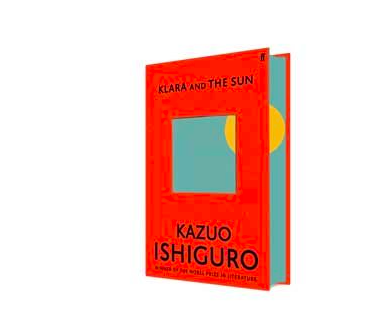Words By Hanani Aslam
Klara and the Sun, Kazuo Ishiguro’s eighth novel and first book since winning the Nobel Prize in 2017, presents an elegant tale about artificial intelligence, love, and what it means to be human. Klara, the titular character, is an observant and deeply empathetic ‘artificial friend’ who waits for the day a child will choose her to be their companion. She is a solar-powered synthetic girl, who for the first half of the book is displayed at the store window, making keen observations of the world around her. In the second half, we follow her relationship with 14-year-old Josie, the young girl who chooses Klara to be her companion, and the people in Josie’s life. There is an eeriness that resembles our own reality when Josie does her studies remotely by videoconferencing with her teachers through devices called ‘oblongs’. It is only during an organised social event that Josie is able to interact with other children, and even this is just a means to practice their socialisation skills.
Ishiguro toys with the line between literary fiction and genre fiction, with little concern for the details of how the science and mechanics of his world works. His prose is far more interested in the subtext. Still, through Klara’s observations Ishiguro drips feeds crucial pieces of information about the world, which at times is frustrating as you are left wanting to know more. Klara’s observations reveal the social divide in this alternative reality, where clothing defines ‘high ranking’ positions and privileged children from wealthy families are ‘lifted’. Though this term is unexplained, it seems to be a euphemism for a form of genetic editing that secures the children’s future successes. Though this comes at a cost of making the children sick, as we see with Josie. Her mother and her human best friend, Rick, are willing to do whatever it takes to help ease Josie’s condition. I think this is where Klara demonstrates her capacity for love and her ‘humanness’, as she loves Josie enough to want what is best for her. She sets out to make an offering to the Sun, which as a solar-powered being, she reveres and almost perceives like a deity. Whether or not the Sun’s ‘special nourishment’ works remains unclear, but Klara holds on to her faith.
Following on from Ishiguro’s 2005 novel Never Let Me Go, Klara and the Sun also builds on the theme of obsolescence. Kathy and her friends in Never Let Me Go were created as clones waiting for their organs to be harvested before ‘completing’. In this lonely environment, Klara’s sole purpose is to help Josie through the lonely years until college as she states, ‘it’s now my duty to be Josie’s best friend.’ Halfway through we also learn more about the conditions of this world as a woman protests Klara’s presence at the playhouse: ‘First they take the jobs. Now they take the seats at the theatre?’ Even Josie’s father has been ‘substituted’ – a euphemism for having lost his job to machines. Klara herself becomes obsolete at the end of the novel, when Josie has outgrown her and goes to college, leaving Klara behind the way we do with our childhood toys and teddy bears.
Despite the reminders of Klara’s synthetic nature, with one neighbour asking her ‘After all, are you a guest at all? Or do I treat you like a vacuum cleaner?’, her thoughts and emotions are deep and real. She demonstrates a willingness to love and form meaningful relationships. Through Klara’s perspective, Ishiguro examines the means by which we tell ourselves that we are human. Ishiguro’s prose is simple but poetic, creating a fascinating and poignant world. It is certainly an intriguing take on the role artificial intelligence may play in our future.

